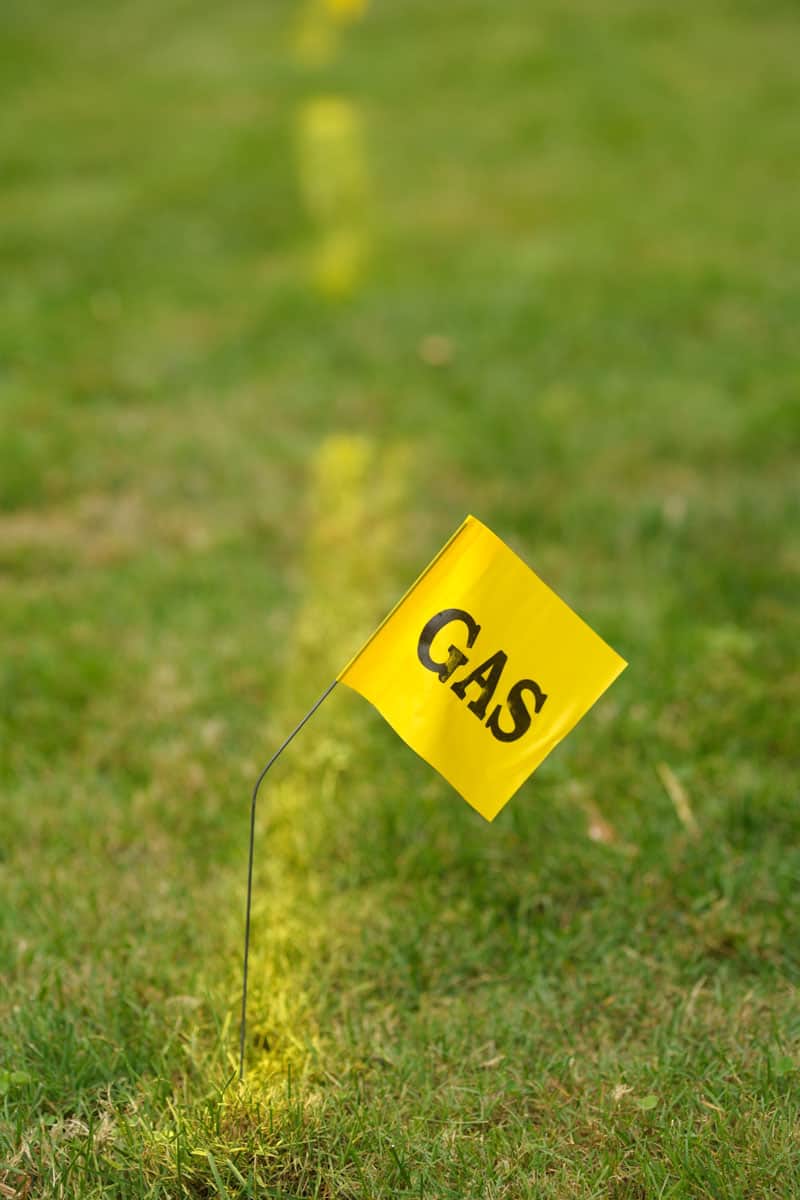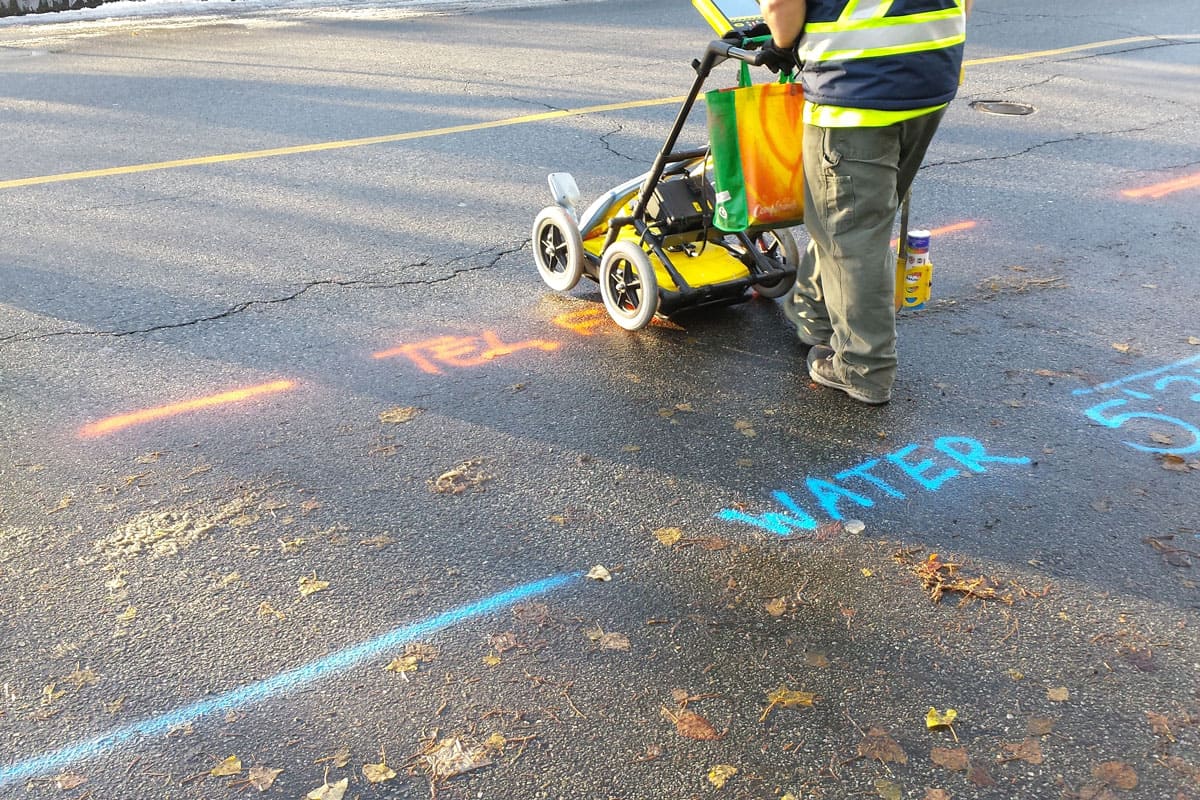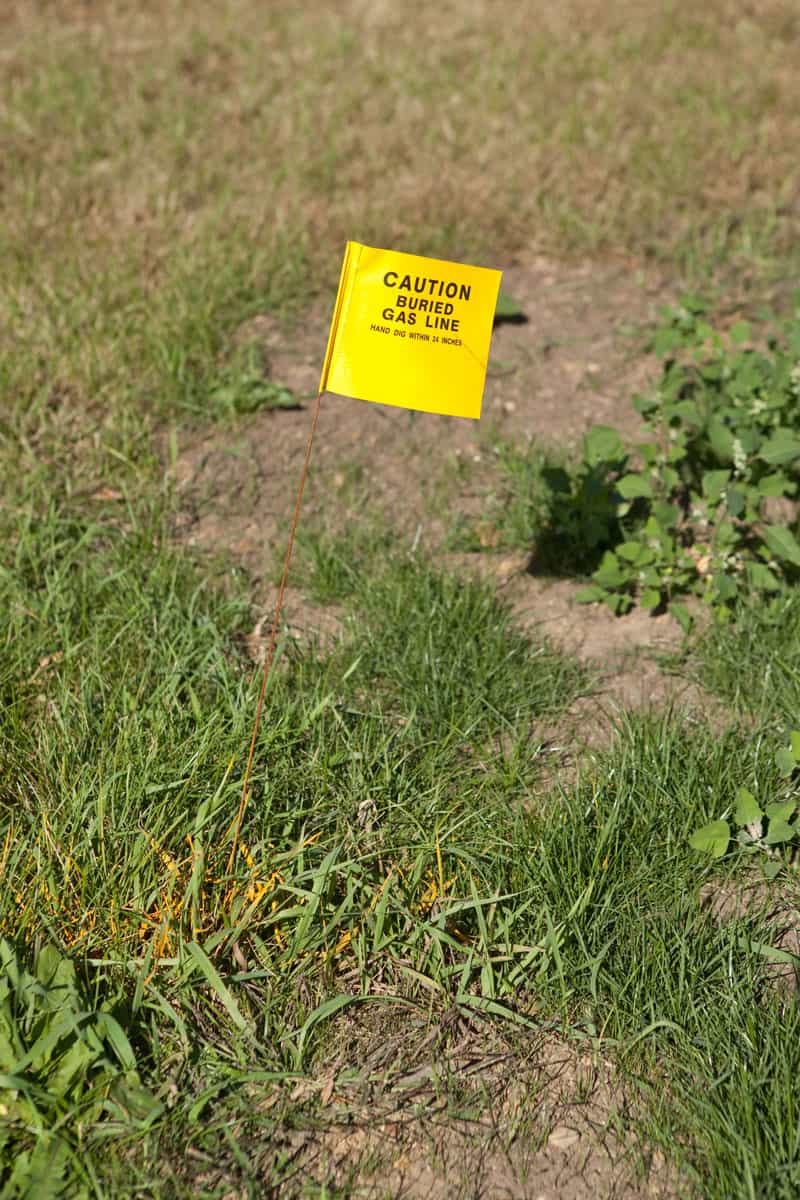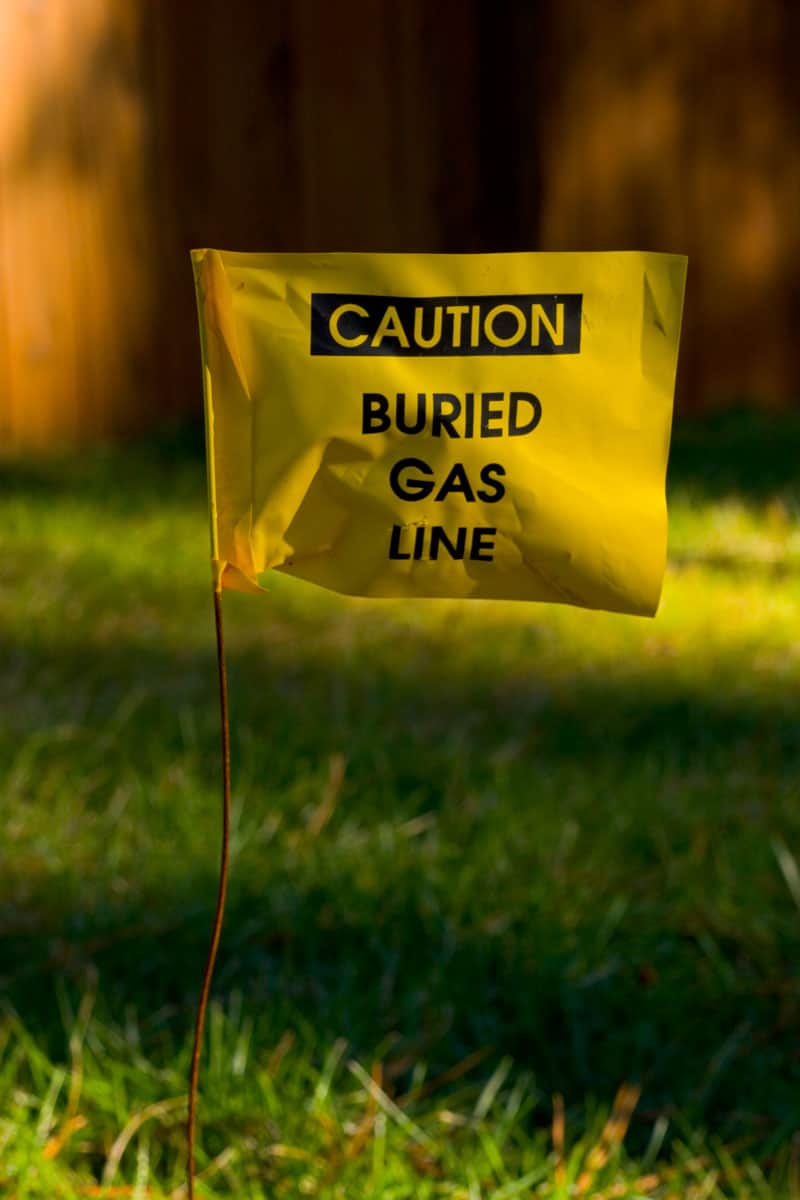Small colored flags or paint marks are a way to indicate something important is buried in the ground. These flags can protect people from making costly or life-threatening mistakes. If yellow flags suddenly appear near your home, you're probably wondering how and why they're there. Look no further because we've done the research and can tell you everything you need to know about those yellow markings!
Utility companies use a yellow flag to indicate places where there is a gas, petroleum, oil, or steam line present. You need to have a surveyor locate potential underground lines anytime you're doing a digging project. If you didn't order the survey, it could be because a neighbor or the local government is doing a project.
You should avoid moving any survey flags until you're sure any underground work is completed. You can call your local 811 group to determine who requested the markings and learn how long it will take until the flags can be removed.
Survey flags are very important and can help you avoid damaging lines while digging. Keep reading to learn more about what the flags mean, how to get your land surveyed, and more!
![Yellow flag at corner of soccer field. sport flag and sign concept., Yellow Flags In Yard: What Do They Mean? [Here'S What You Should Know!]](https://gardentabs.com/wp-content/uploads/2022/11/Yellow-Flags-In-Yard-What-Do-They-Mean-HereS-What-You-Should-Know.png)
Yellow Utility Flag Meaning
Seeing flags or paint markings on or around your property is an indication that there are underground lines below the flag. The American Public Works Association (APWA) created a color-coding system so that people will know what underground lines there are.
So, if you see a yellow flag or paint, then you know that someone is working on a digging project, and there are underground facilities with gas, oil, steam, or other gaseous materials under the marking.

If you don't plan on doing any digging, then it probably came as a surprise to see these flags in your yard. However, you shouldn't be concerned about people coming in and digging up your yard.
Seeing these indication flags can mean that a neighbor is doing work on their yard or that the city is planning on doing some digging nearby.
You should first ask your neighbors if they are planning on doing any digging. If they're not the cause, then you can contact your local 811 office to determine who, if anyone, ordered a survey request.
Importance Of Flag Markings

Indicator flags are necessary to avoid damaging public utility and service lines. The United States has over 20 million miles of underground utility lines. Unfortunately, these lines can be easily damaged by both large and small digging projects.
If you hit utility lines while working, it can be a very serious problem. Hitting electric or communication lines can shut off power and disrupt the internet and telephone networks for your neighbors.
If you damage a sewer line, then you could flood the area you're working on. Flooding can also cause long-term damage to your soil.
Hitting a gas line can be especially dangerous. If you hit this line, then gas can leak out, which can contaminate the local soil and water sources.
In addition, gas can explode when exposed to flames. If you suspect you damaged a gas line, it's critical that you evacuate the area and call 911. If possible, you should also contact the owner of the gas line.
You should never try to control a gas leak by yourself. If you avoid contacting emergency services, an explosion or fire can easily occur.
In 1998, four people were injured, and six buildings were destroyed 40 minutes after a company hit a gas line. You can prevent this type of destruction from happening by knowing where utility lines are located and by having an emergency plan in place.
How To Have Utilities Marked

You need to call 811, go to their website, or contact your local 811 agency before starting any digging projects.
Do not skip calling the hotline because you think your project is too small. You're required to call 811 even if you're only putting in a fence, mailbox, garden bed, or planting trees and shrubs. If you damage a utility line and failed to have them marked, you can face serious fines and potentially legal action.
To have underground lines marked, all you have to do is contact the 811 office for your jurisdiction. Then, you'll give them the information for the site that you're digging at and provide a good contact number for you.
You'll also need to provide the information for the person digging if that person isn't you and what type of work you plan on doing. The 811 service will contact the utility services for you. You will receive a ticket number and can use that ticket to check up on your request.
Before digging, you need to make sure that all services have been marked. You can tell when the company has been by your site because you'll see the colored markings, or they will contact you to give you an all-clear or provide maps of the underground lines.
You are not cleared to dig until all utility companies have responded to your request.
Can I Remove Indicator Flags From My Yard?

If you've seen little flags in your yard for a long time, it can be tempting to remove them. However, it's best to leave them where they are. It's possible that there is still work that needs to be done. Removing the flags before the job is done can cause someone to accidentally damage a line.
The Common Ground Alliance, which is responsible for the Call Before You Dig hotline, states that it's the contractor's responsibility to remove utility flags. They will have the best knowledge of when a project is finished.
If locator flags have been on your property for more than two weeks, then you may be able to move them. However, first, contact your local 811 office to see if there are any open tickets in your area. If the ticket is expired, then you can move the flags.
If the ticket is still open, it's important to keep the flags. Remember that they are there to help protect you from potentially fatal mistakes during digging.
When Will Paint Markings Go Away?
Utility lines can be marked with both paint and flags. The excavator is responsible for removing both paint and flags. However, typically only the flags are removed. The paint usually gets left behind because it will fade over time.
How long it takes the paint to fade will vary depending on the surface and type of paint used. Some paints can disappear in as little as 30 days. However, some markings may stay for longer.
If you no longer need the markings, then you can try and wash them away. If your marks are on concrete, you can try and wash them away with a graffiti remover. You can also try to powerwash the area.
Grass paint tends to fade away in a few months, especially if it's healthy and you cut it frequently. You can try to wash the paint off of your grass, but know that you may cause more harm than good.
One method for washing grass is to powerwash the area on the lowest setting. You can also use warm water and soap to wash it away by hand.

Take a look at this graffiti remover on Amazon.
What Do The Other Flag Indicators Mean?

The APWA has created a color coding system in order to identify underground lines. There are eight colors in total.
White markings indicate a proposed excavation site. You can mark your yard with white lines to show the utility companies where you plan on digging. This is a great way to avoid excessive flags on your property because utility companies will only show underground lines within those markings.
Pink lines indicate temporary survey markings. These are placed when showing the legal boundaries of a project. Red markings show where there are electric or lighting lines present. Orange markings represent telephone, communication, and cable lines.
Blue, green, and purple markings all indicate water lines. Blue flags show where there are underground potable water lines. Green markings indicate sewers or drain lines. Finally, purple markings are for reclaimed water or irrigation lines.

Check out these white flags that you can use on your next project on Amazon.
In Closing

Yellow locator flags are crucial for avoiding damaging gas lines. You can see these markings in your yard if you have an upcoming project and if your neighbor or city is doing a digging project. While tempting, you should never remove these flags, as doing so can cause serious damage that you may be responsible for.
Check out one of the posts below:
Can Rose Roots Damage Water And Gas Pipes?
How Deep Should Retaining Wall Posts Be?
![Yellow Flags In Yard: What Do They Mean? [Here's What You Should Know!]](https://gardentabs.com/wp-content/uploads/2024/01/Yellow-Flags-In-Yard-What-Do-They-Mean-Heres-What-You-Should-Know.jpg)
